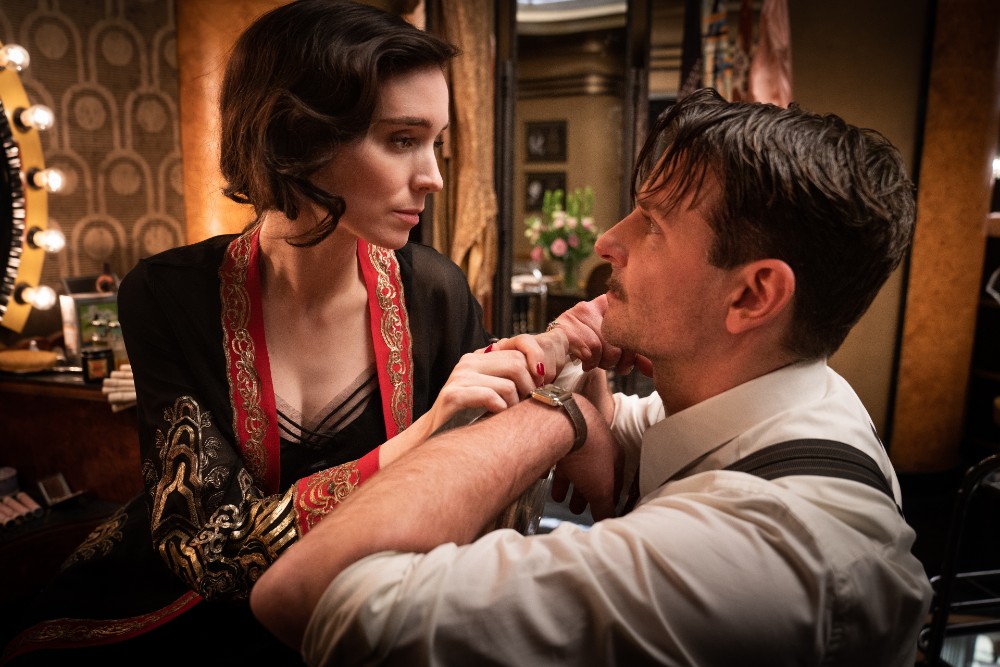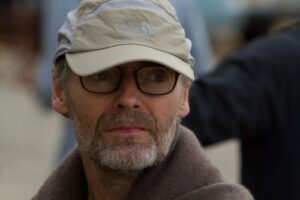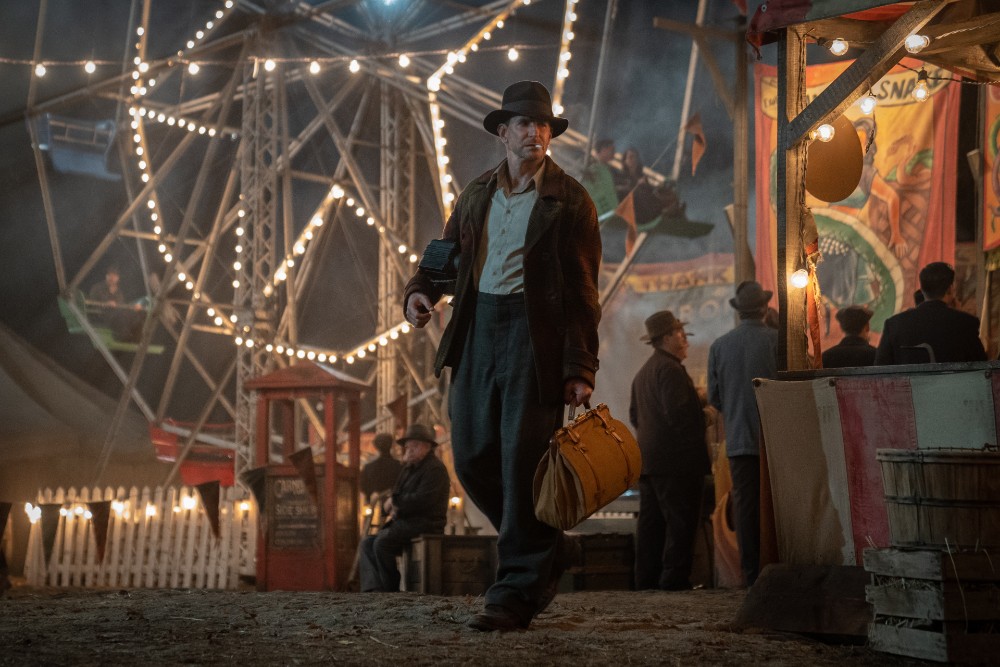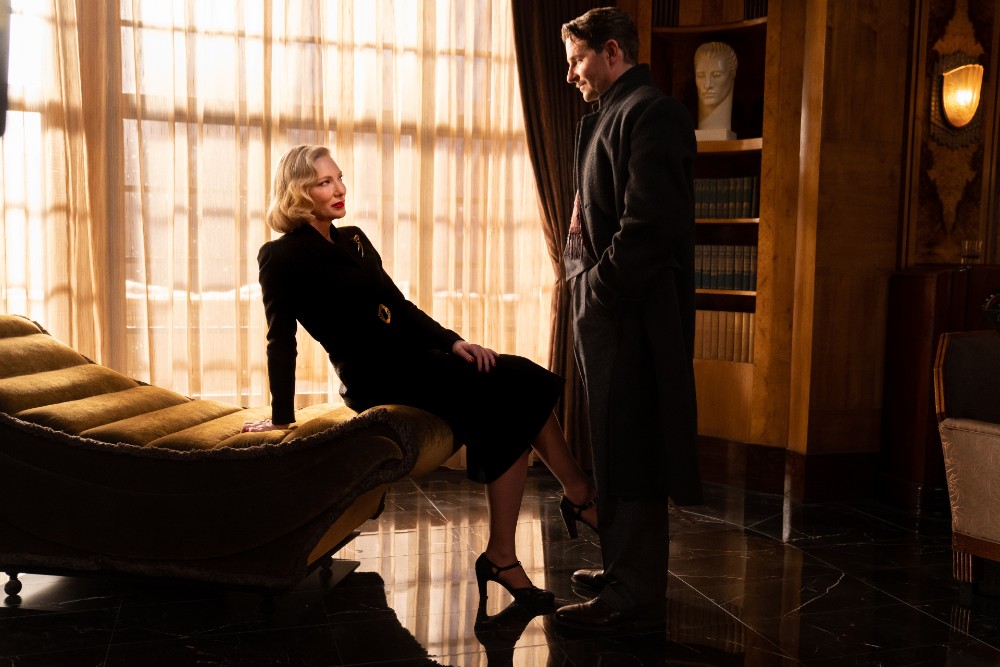
Set in a Depression-era world of illicit sideshows and scheming grifters, Nightmare Alley burrows into the despair and shame crawling beneath the American Dream. Relentlessly grim and hypnotically beautiful, the film has a trajectory unlike any other this season.
Starring Bradley Cooper (also serving as producer) as down-on-his-luck drifter Stan Carlisle, the film features a remarkable cast including Cate Blanchett, Toni Collette, and Rooney Mara as a trio of women who help shape Stan’s fate.
Written by William Lindsay Gresham, whose tragic life echoes his plot, the novel became a post-WWII vehicle for Hollywood star Tyrone Power in one of his efforts to break out of matinee idol roles.
Nightmare Alley marks the fourth collaboration between director and co-writer Guillermo del Toro and cinematographer Dan Laustsen. Their last film, The Shape of Water, won the Oscar for Best Picture. Del Toro and Laustsen reimagine the source material behind Nightmare Alley with a freedom that was unavailable to earlier artists. This is a harsh, grim story, one marked by astonishing visuals and ferocious acting.
Laustsen spoke with Below the Line over Zoom from his home in Denmark.

Below the Line: Did you watch the original film version?
Dan Laustsen: No, I try to stay away from stuff like that. When I’m doing a movie, I like to go in with a more-or-less open impression.
BTL: How long did you have to prep?
Laustsen: The first time we had maybe 12 weeks, but the problem is we started in August and after two weeks, the production shut down. I left for another project, and when I came back we got shut down again in March 2020, because of COVID-19. We came back in August, but it’s like we were shut down in the middle of painting.
BTL: How do you work out the visuals with del Toro? Do you storyboard?
Laustsen: No. No storyboards at all. He does his own small sketches in a book. He would show me every morning, “This is what we are going to do.” I would see it for like ten seconds, and then he would close it again.
Of course, we’ve talked a lot about the movie. I knew more or less where we are going to start. Everything’s changed in the last couple of years of movie-making. I’ve seen this on all the shows I’m doing. When I get to the set, we have to be prepared to shoot in all directions. We more or less light for 360 degrees. When we start shooting, we’re just fine-tuning what we already lit.
Every day, I know what we’re going to do, of course. We may light 360, but I know they’re not going to shoot 360. It’s just that if you want to shoot to the left, we will have light for that. If Guillermo wants to shoot to the right, we have light for that. I have nothing against changing plans as long as the movie’s getting better.
In the old days, you would have to decide: I’m going to shoot in that direction. Very precise. But I’ve stopped working like that anymore.
BTL: When we talked about The Shape of Water, you mentioned a color you used in Mimic and again in Crimson Peak. Did you do something similar here?
Laustsen: We have a steel-blue light. That’s going all the way back to Mimic. When you see the carnival, for example, all the backlight there is the same steel blue. I tried to get away from it but I’m coming back to it, I used it again in the last one I did, John Wick 4. [Laughing] I’m never going to use it again.
BTL: There’s a shot of Rooney Mara in a telephone booth. She’s wearing a red jacket and beret, she’s got red lipstick and red nail polish.
Laustsen: When we’re prepping the movie, it was not just red, it’s a very specific red in a very specific place. The department heads work very closely together, in that case with Production Designer Tamara Deverell and Costume Designer Luis Sequeira, and of course, everything is going to Guillermo.
We were pretty lucky that day, the balance between the color and the exposure is nice. What we did is make a small hole through the ceiling to hang lights. And then I have just one tube inside the box with another black wrap-around. That small key in her eyes is super simple, but I love that shot. It’s so powerful.

BTL: Nightmare Alley is filled with extraordinary shots that don’t call attention to themselves. There’s a moment when Bradley Cooper is hiding in a boxcar, and the camera starts to rise up.
Laustsen: That’s in a studio, you know. Outside, when he’s running, being chased, was shot on location somewhere in Toronto. He jumps into the boxcar and hides, then the train starts to leave, which you can tell from the lights passing by. I think we put at least 40 2Ks, old-fashioned Fresnel 2Ks, on a dimmer board so it would look like the light was running. Then there was shaking, we were shaking the boxcar a little bit, then we pulled up with the crane. It was simple, but it works.
BTL: I love the camera movement in Nightmare Alley. I’m wondering if it was timed to music or other cues.
Laustsen: The timing is Guillermo. He knows his timing. We talk about the camera moves, what equipment we’re going to use. But he is the one making the movements with the grips, because he’s the only one who knows where to cut.
He’s so precise about his camera moves. Sometimes it’s a challenge. Sometimes it’s not easy, like that shot with Cate coming over Bradley’s shoulder into a big close-up. It’s really difficult to do. But it’s fantastic with Guillermo, he’s fun to work with because he’s never really rushing you. Of course, he wants to move forward, but if you’re doing a close-up of Cate and all the other cast, it has to be perfect.
BTL: Are you talking about the scene with Cate Blanchett and Bradley Cooper in her office, where she walks into these incredibly lit close-ups?
Laustsen: The set is prelit, of course. They came in, and we figured out the blocking. We wanted very old-fashioned lighting there. The tricky part is that the camera’s moving so much, so we have to have a light travel with a camera. Let’s say we’re starting over his right shoulder, tracking over his left shoulder, and she’s coming in to a close-up. The light is traveling with us, so when she’s coming to her close-up, she’s lit properly. It is a little bit complicated.
BTL: It’s an amazing moment, I don’t think I’ve ever seen her look like that before.
Laustsen: It was not easy at all. We had to build our own follow spot. We built a tube about a meter long and put a 650 inside it, and we followed her with that.
If you have any chance to watch that scene again, see how many times we are crossing the line with the camera. It’s insane.

BTL: What was your camera package?
Laustsen: We used the Alexa 65 with Signature primes. I used a trick I used on The Shape of Water, where I have a diffusion filter inside the camera, behind the lens. The Alexa 65 and the Signature primes are a really good combination, but a little bit too sharp. With a filter, you’re not smashing the black, but you’re breaking up the highlight. Not too many people do it because it’s a little bit tweaky to work out.
BTL: You have a wonderful scene in a snow-covered garden at night.
Laustsen: Half of the snow was real and half was artificial. It’s easy to fake snow, the tricky part of that scene was when Rooney enters wearing a white dress. We lit it with some big cranes pretty far back, so you see shadows on the ground. We didn’t want to have any shadows on her because we wanted to show her innocence, light her cleanly, like an angel. An ancient ghost.
I put a moving head on a crane, just above the camera, to just light her, only her, with a follow spot.
BTL: You did the color grading while you were working on John Wick 4?
Laustsen: We did the dailies color grading with Company 3 in Toronto, and the final grading at Company 3 in Los Angeles. Because I was shooting John Wick 4, I did a lot of color correction remotely, from a lab in Berlin. I went in every weekend.
The way we’re shooting movies now, the color on the dailies is the same as the final movie. One-to-one. We’re not touching the colors in post. Very rarely, we’re retouching corners or windows. I want to have the color in the exposure. I’m a little bit old-fashioned, I want to do it right from the beginning. It was not perfect, and of course, Guillermo came in and helped out in Los Angeles. But the color palettes and the balance are the same in the dailies as in the final.
Nightmare Alley is still playing in theaters nationwide.





